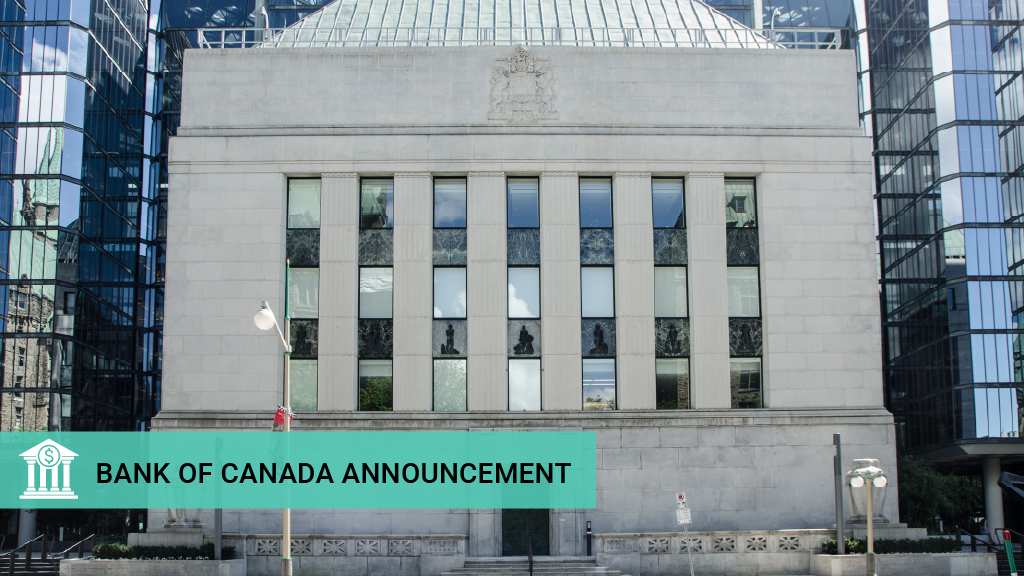
Today, the Bank of Canada announced that it would hold its target for the overnight lending rate at its current level of 2.75%. This is the third consecutive announcement where the Bank has chosen not to change interest rates.
While some parts of U.S. trade policy have started to take shape, negotiations are still ongoing, and new tariffs continue to be a possibility. Despite these pressures, Canada’s economy is showing signs of resilience.
“At this rate decision, there was clear consensus to hold our policy rate unchanged. We also agreed that we need to proceed carefully, with particular attention to the risks and uncertainties facing the Canadian economy. These include: the extent to which higher US tariffs reduce demand for Canadian exports; how much this spills over into business investment, employment and household spending; how much and how quickly cost increases from tariffs and trade disruptions are passed on to consumer prices; and how inflation expectations evolve,” said Tiff Macklem, Governor of the Bank of Canada, in a press conference with reporters following the announcement.
“If a weakening economy puts further downward pressure on inflation and the upward price pressures from the trade disruptions are contained, there may be a need for a reduction in the policy interest rate.”
Canada’s Consumer Price Index (CPI) rose 1.9% year over year in June, up from 1.7% in May. The uptick was partly due to stronger price growth in durable goods such as passenger vehicles and furniture. While shelter price inflation remains the largest contributor to overall inflation, it continued to show signs of easing.
“We are focused on ensuring that Canadians continue to have confidence in price stability through this period of global upheaval. We will support economic growth while ensuring inflation remains well controlled,” said Macklem.
Housing market sees slow spring, early summer rebound
Canada’s housing market lacked its usual spring momentum in 2025. However, as consumer confidence improved toward the end of the second quarter, market activity began to pick up. Stability in interest rates may help to boost sales momentum heading into the fall market.
According to the Royal LePage® House Price Survey and Market Forecast released earlier this month, the aggregate1 price of a home in Canada eased upwards modestly in the second quarter of 2025, increasing 0.3% year over year to $826,400. On a quarter-over-quarter basis, the national aggregate home price decreased by 0.4%.
“In a widely anticipated move, the Bank of Canada has held its overnight lending rate steady once again. This decision reflects the delicate tightrope our central bank must walk. While domestic inflation trends are largely under control, the aggressive and often unpredictable trade stance of the United States is creating real headwinds for Canadian policymakers,” said Phil Soper, president and CEO of Royal LePage.
“By maintaining the current rate, the Bank is signaling a cautious, measured approach in the face of global economic volatility and the looming August 1st deadline for a new Canada–U.S. trade agreement. For Canadians, today’s decision offers a degree of certainty. For real estate markets, it’s likely more people who need to upgrade their housing will decide they can wait no longer, spurring activity heading into the fall. Economic fundamentals, from strong employment to much improved affordability, are supporting conditions for growth in the housing market, along with material demand waiting in the wings.”
The Bank of Canada will make its next interest rate announcement on Wednesday, September 17th.
Read the full July 30th report here. Want to know more about how the overnight lending rate works? Read our explainer on how the Bank of Canada uses this financial tool.
1Aggregate prices are calculated using a weighted average of the median values of all housing types collected. Data is provided by RPS Real Property Solutions and includes both resale and new build.




